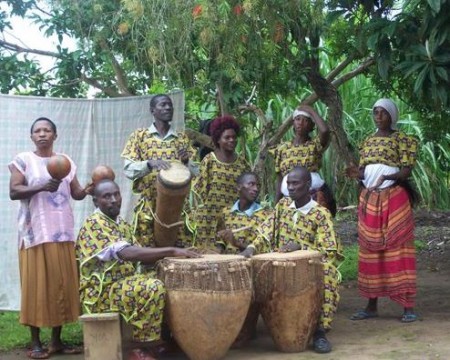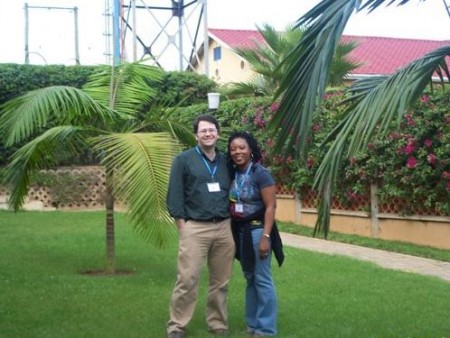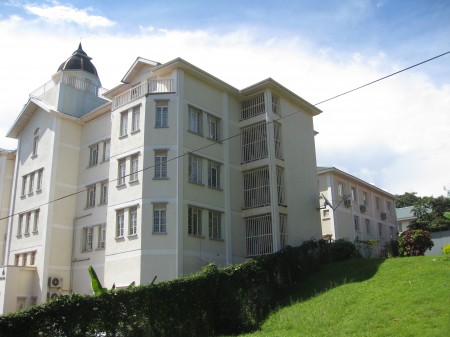In 2007, the JHU Department of Pathology donated a significant parcel of equipment to establish a research histology lab at the Rakai Health Sciences Program (RHSP) facility in Kalisizo, Rakai District, Uganda. The Rakai Health Sciences Program is a unique research venture run by Ugandan scientists and clinicians and operates as a joint venture of the Ugandan Ministry of Health, the Johns Hopkins Bloomberg School of Health, the National Institutes of Health and Makerere University (Kampala, Uganda). In March, we visited Uganda as a small part of a three-year research training grant cosponsored by the National Cancer Institute (NCI) and Fogarty International Center (FIC). The purpose of this grant is to develop research capacity for the study of HIV-associated malignancies in Africa. Unfortunately, despite Uganda’s praiseworthy response to the HIV epidemic, this equatorial East African country still has extremely high rates of cervical and penile cancers, both of which are related to HPV infection and exacerbated by HIV co-infection.
When we arrived at the RHSP, we went straight to work unpacking our supplies, setting up and testing the histology equipment and meeting our Ugandan colleagues. Although the equipment donation by the department was generous, it predated our involvement in the project and we had never actually seen it before. Likewise, we had never seen the laboratory space designated for the project nor had we even visited the Rakai Health Sciences Program! There were some surprises. Critically, a piece was missing from the tissue processor that was donated. The tissue processor is an essential component in the paraffin-embedding process. Luckily, we were able to demonstrate that the remaining equipment was working by cutting and staining several slides using paraffin blocks we brought with us. We also had issues with power stability in the histology lab space which is located in the RHSP’s older lab facilities. On one day in particular, brief power outages occurred almost every twenty minutes as municipal electricity cut out and the generators turned on. Equipment and electrical issues will be remedied before a return trip in the fall.
This trip was a fantastic experience, and our hosts at the Rakai Health Science Program supported us with an abundance of hospitality and assistance. The research that they are doing continues to discover new techniques for the prevention and treatment of HIV infection, and the community outreach and care they provide makes a real difference in the district. Katina was able to attend of their outreach events, a drama about domestic violence performed to an audience from several villages. At the end of the week we found time to take a side trip to the beautiful Queen Elizabeth National Park and relaxed a little.
About the Rakai Health Science Program
The RHSP was founded in 1987 by Drs. Sewankambo and Serwadda, researchers from Makerere University in Kampala, Uganda. It began as a small community cohort study investigating the “slim disease” in the rural Rakai District in southwestern Uganda. In 1988 the program established a field station in rented shops in the town of Kalisizo, and a number of additional PIs, including Drs. Ron Gray and Maria Wawer from the Johns Hopkins Bloomberg School of Public Health, joined the research program. In 2005, the RHSP built a new, state-of-the-art laboratory facility with facilities for microbiology, tissue culture, serology and nucleic acid amplification in addition to clinical facilities with two operating rooms.
The Rakai community cohort has grown to include 50 villages with data collected from about 12,000 individuals annually. The community cohort is the core population for a variety of research that includes epidemiologic studies, demographic studies, behavioral research, and clinical and basic science. Through these studies, the RHSP provides a variety of services including community outreach, health education programs, prevention and management of sexually-transmitted infections, treatment of current illnesses, voluntary HIV counseling and testing, and antiretroviral therapy for eligible HIV-infected persons. The program currently employs over 400 staff members.
The RHSP has been supported by numerous grants from the NIH as well as funding from the Bill and Melinda Gates Foundation, Doris Duke Charitable Trust, USAID, the Rockefeller Foundation, the Mellon Foundation, and others.
Toby Cornish, MD, PhD
Clinical Fellow, GI & Liver Pathology
Katina Williams, HT(ACSP)
Lead Histology Technician
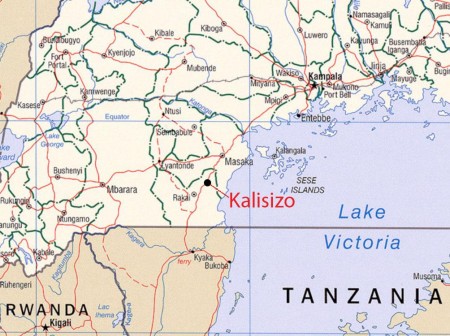
The Rakai Health Sciences Program is located in Kalisizo in the Rakai District of Southwestern Uganda. We worked and stayed in a guest house in Kalisizo town. The Rakai District has a population of around 500,000 and is situated just south of the equator.
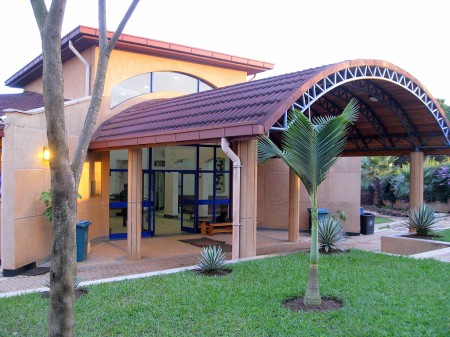
The main entrance of the new RHSP research and clinical facility.
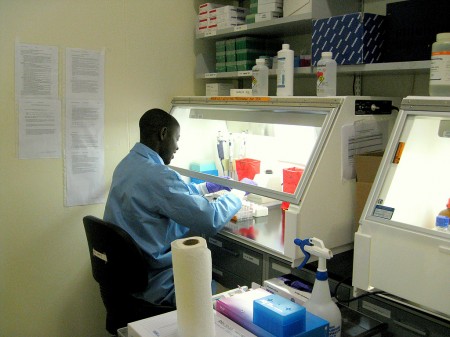
The PCR preparation area in the main RHSP laboratory facility.
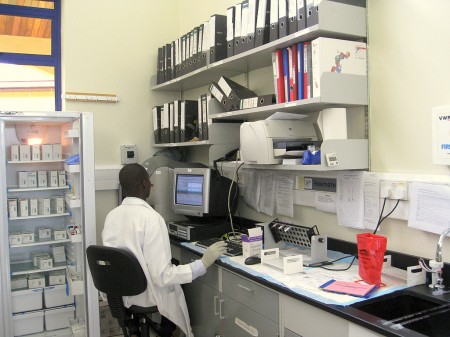
The hematology bench in the main RHSP laboratory facility.
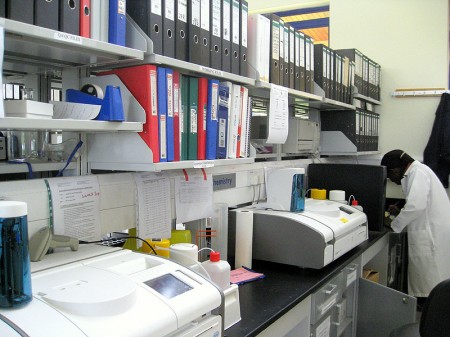
The clinical chemistry lab in the main RHSP laboratory facility.
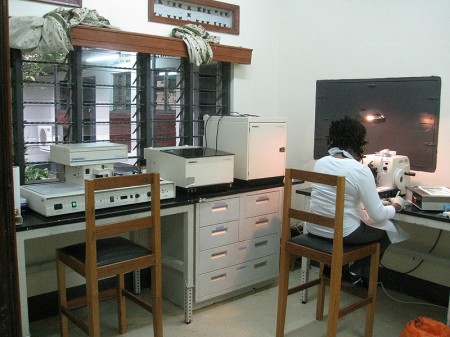
The histology lab was set up in the old microbiology lab in the original RHSP lab facilities. The embedding station and tissue processor donated by the Department are on the left while Katina sections tissue on at the microtome on the right.
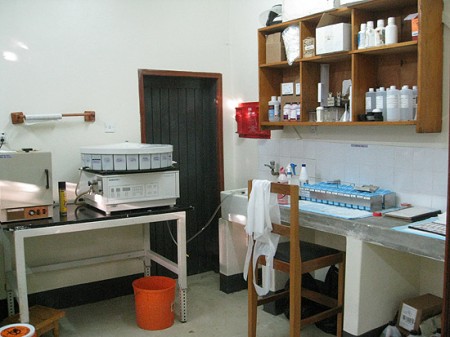
The autostainer and manual stain line in the histology lab.
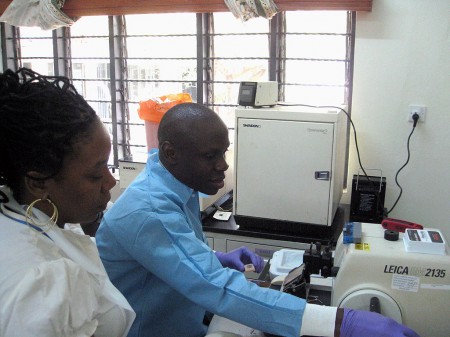
Ivan sections a block while Katina looks on.
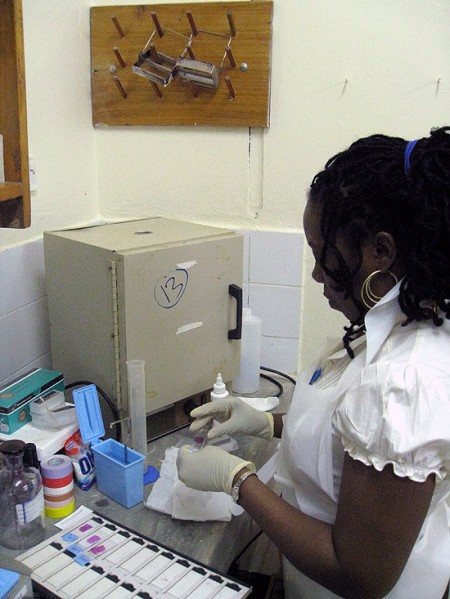
Katina mounts coverslips on finished slides.
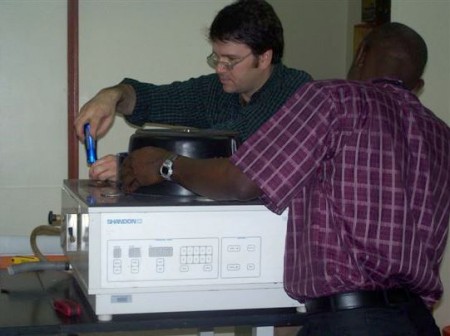
Ivan and Toby make adjustments to the autostainer which unfortunately needed repair after being damaged during shipment.
Ugandan children walking from school to their homes to eat lunch.
A group of musicians and actors present a drama about domestic violence as part of an outreach program affiliated with the RHSP.
Toby and Katina in the courtyard behind the RHSP laboratory facility.
On our way to the airport, we stopped to see a familiar dome on the Zayed Family Care Center, the newest Makerere University-Johns Hopkins University (MU-JHU) facility on Mulago Hill in Kampala. The two other MU-JHU buildings on the campus can be seen in the background.

